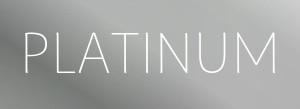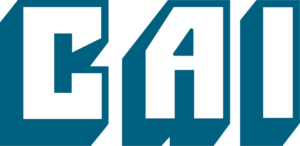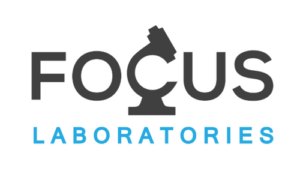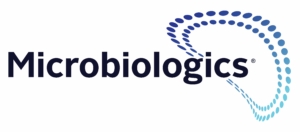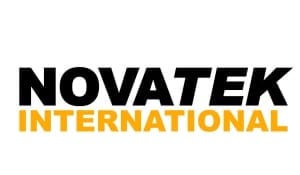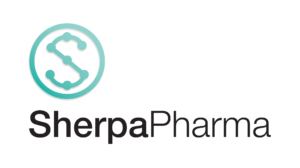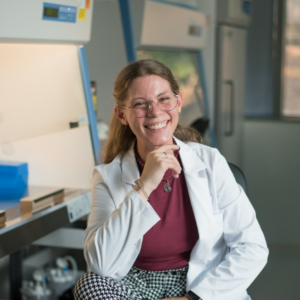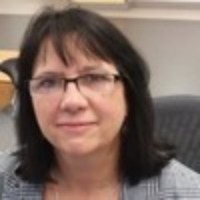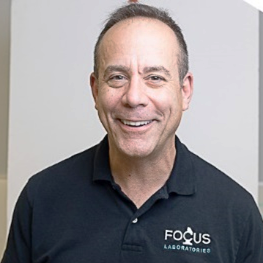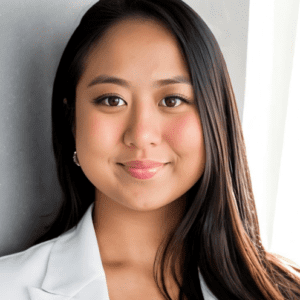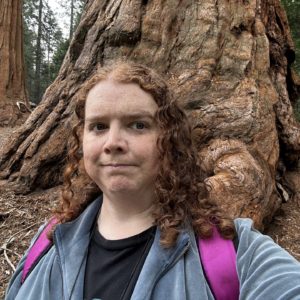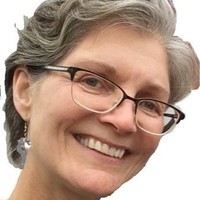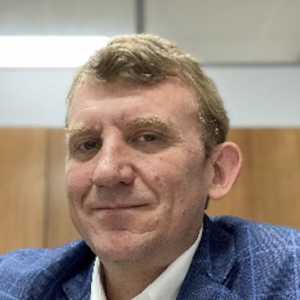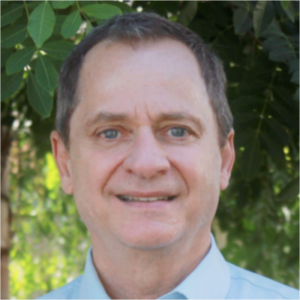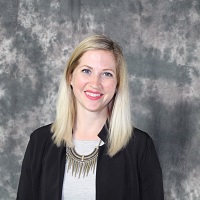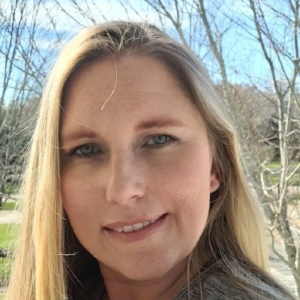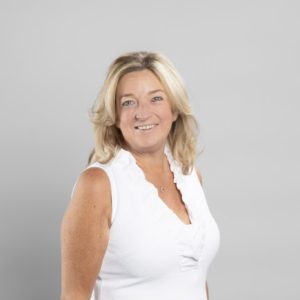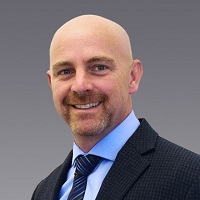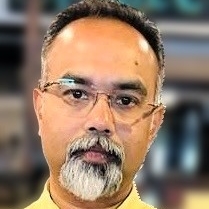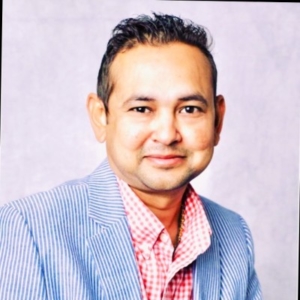
AGENDA
Day 1
| Time | Title | Speaker | Session Description |
|---|---|---|---|
| 12:00 – 1:00 PM | Registration – Coffee & Tea | ||
| 1:00 – 1:15 PM | Chairperson’s Opening Remarks | ||
| 1:15 – 2:15 PM | Panel: Annex 1 & the Impact on Cleanroom Management, Environmental Monitoring, & Cleaning Validation | Moderator: Sheba Zaman, Head of Product Specialists and Training Services Novatek International
Panelists: Joscelyn Bowersock, Senior Director Quality Assurance and Regulatory Precision for Medicine Liz Brockson, Aseptic Processing & Sterility Assurance Lead Takeda Sharif Uddin, Ph.D., Principal Engineer Process Cleaning Rockline Industries |
|
| 2:15 – 3:00 PM | Advancements in Cleanroom Technology: Explore Emerging Trends | Cindy Duhigg, Global Process Validation Steward Alcon | Topics: • Cleanroom beneficiaries: Pharma and med device, as well as healthcare, electronics, aerospace, and precision engineering • Cleanroom contributions to quality, safety, sterility, and now sustainability • Nanotechnology in cleanroom construction • Robotics and automation in cleanrooms • Advanced filtration technologies • IoT and Cleanroom monitoring • Sustainabiliity and green cleanrooms |
| 3:00 – 3:30 PM | Networking Refreshment Break and Exhibit Showroom | ||
| 3:30 – 4:00 PM | Bridging the Gap – Aligning Your Processes to the Annex 1 Update | Amy Bradford, Principal Consultant-Quality/Micro CAI | |
| 4:00 – 4:30 PM | Harness Generative AI for Enhanced Cleanroom Validation, Disinfection, and Environmental Monitoring | Arielle Musa, Microbiology Specialist Johnson & Johnson | Topics: Transforming Roles: Shifting mindset from individual success to collective progress and reimagine existing roles that thrive in a new AI-empowered landscape. Transferring Knowledge: Training and upskilling a team to handle the new data-centric roles. Translating Datasets: Reimagining and merging new and existing data sets for robust data collection Transcending Obstacles: Strategically navigating the complexities of sensitive data mining within the pharmaceutical industry’s regulatory framework. Transitioning to AI: Mapping milestones to produce useful tools and impactful results while transitioning to AI solutions. Takeaway Tools: |
| 4:30 – 5:00 PM | Annex 1 & Rapid Microbiological Methods | Joscelyn Bowersock, Senior Director Quality Assurance and Regulatory Precision for Medicine | |
| 5:00 PM | Networking Cocktail Reception |
Day 2
| Time | Date | Session Title | Speaker | Session Description | |
|---|---|---|---|---|---|
| 8:00 – 9:00 AM | 8/8/24 | Exhibitor Showroom Opens and Lite Breakfast | |||
| 9:10 – 10:00 AM | 8/8/24 | Select Between Knowledge Exchange Sessions | |||
| 9:10 – 10:00 AM | 8/8/24 | Celsis ATP Bioluminescence Technology for Rapid Sterility Testing | Nathan Wasilko, Ph.D, Scientist II Charles River Laboratories | Topics:\n • Overview of the Celsis Advance II and Celsis Adapt instruments\n • Application of ATP bioluminescence technology for rapid sterility testing \n • Determining the scope of an alternative method validation \n • Overview of USP \n • Case study for implementing an alternative rapid microbiological method\n \n Takeaway Tools:\n • Article on the suitability of ATP bioluminescence technology for rapid microbial detection\n • Article on the use of rapid microbial methods for short shelf-life products | |
| 9:10 – 10:00 AM | 8/8/24 | Navigate the Challenge of Accurate Microbial Identification | Ratul Saha Ph.D., Director, Global Sterility Assurance Programs Bausch & Lomb | Topics:\n Microbial identification should be commensurate with the microbial contamination risk to theproduct. The correct identification of microorganisms is of fundamental importance in thepharmaceuticals and the medical devices industries as it is helps: a.) with source tracking of thecontaminant within a manufacturing process, b.) understand the environmental monitoringtrend data, c.) use as challenge organisms in disinfectant efficacy studies, d.) growth promotiontesting, e.) method suitability and validation, f.) as well as assessment of microorganisms ofconcerns/objectionable organisms, and g.) antibiotic susceptibility testing of recovered isolates(from nonsterile drug products) thus enhancing product quality and patient safety\n • Microbial Taxonomy\n • Identification Methods\n • Polyphasic Taxonomy\n • Factors influencing Microbial ID Accuracy\n • Interpretation of ID\n • Fungal Identification\n • Case Study | |
| 9:10 – 10:00 AM | 8/8/24 | Cleaning Validation Program Design – A Risk-based Lifecycle Approach | David W. Vincent MPH, Ph.D, Chief Scientific Officer VTI Life Sciences | Topics:\n This course delves into the principles and practical implementation of a risk-based lifecycle approach for designing effective cleaning validation programs. Participants will gain insights into the following key areas:\n \n I. Introduction\n • Brief overview of cleaning validation and its importance\n • Introduction to the risk-based lifecycle approach\n \n II. Risk Assessment in Cleaning Validation \n • Understanding risk management components\n • Identifying critical process parameters\n • Risk assessment tools (e.g., FMEA/FMECA)\n \n III. Designing a Risk-based Cleaning Validation Program \n • Developing a risk-based strategy\n • Incorporating risk control measures\n • Integrating process analytical technology (PAT)\n \n IV. Lifecycle Phases and Monitoring \n • Overview of the cleaning validation lifecycle\n • Periodic assessment and monitoring\n • Communication and reporting\n \n V. Q&A and Discussion \n • Addressing audience questions and engaging in discussion | |
| 10:05 – 10:45 AM | 8/8/24 | Select Between Knowledge Exchange Sessions | |||
| 10:05 – 10:45 AM | 8/8/24 | Performing Facility Annex 1 Compliance GAP Analysis | David W. Vincent MPH, Ph.D, Chief Scientific Officer VTI Life Sciences | ||
| 10:05 – 10:45 AM | 8/8/24 | Case Study: Machine Learning in Microbiology | Arielle Musa, Microbiology Specialist Johnson & Johnson | ||
| 10:05 – 10:45 AM | 8/8/24 | Unlocking 20 Years of Digital Cleaning Validation Wisdom: Key Lessons and Insights | Ravi Moorthy, President Quascenta | Topics: • Chemical residue limits calculation o Difference in approach for API, Formulation and Biotech manufacturing o Why health basis limit limits may not be the best approach as a universal rule o Products with more than 1 active o Detergents o New drug products • Product grouping – Why for solid orals we frequently end up with the wrong worst case product • Digitilization – What actually do you gain from moving to a CV application |
|
| 10:45 – 12:00 PM | 8/8/24 | Speed Networking | |||
| 12:00 – 1:00 PM | 8/8/24 | Lunch and Learn | |||
| 1:00 – 1:40 PM | 8/8/24 | Select Between Knowledge Exchange Sessions | |||
| 1:00 – 1:40 PM | 8/8/24 | Disinfectant Efficacy Testing: A Critical Component of a Valid Contamination Control Strategy | Anthony Grilli, CEO & Owner FOCUS Laboratories | ||
| 1:00 – 1:40 PM | 8/8/24 | Develop and Implement a Risk-based Non-sterile Program | Cindy Duhigg, Global Process Validation Steward Alcon | Topics: • Understand the Regulatory Background: cGMPs and Related Guidances • How to use room classification to your benefit • Define a holistic, risk-based approach to bioburden control o Prevent process and product variability through engineering controls o Reduce the probability or frequency of variability through effective cleaning, sanitization, and maintenance o Recognize variability with effective monitoring, in order to mitigate quickly Takeaway Tools: |
|
| 1:00 – 1:40 PM | 8/8/24 | Hygienic Design Mastery: Elevate Your Cleaning Validation Standards | Sharif Uddin, Ph.D., Principal Engineer Process Cleaning Rockline Industries | ||
| 1:50 – 2:30 PM | 8/8/24 | Select Between Knowledge Exchange Sessions | |||
| 1:50 – 2:30 PM | 8/8/24 | Case Study: Global Implementation of Annex 1-Compliant Contamination Control Strategy | Liz Brockson, Aseptic Processing & Sterility Assurance Lead Takeda | ||
| 1:50 – 2:30 PM | 8/8/24 | Automation in Environmental Monitoring | Alexandra Bezilla, Project Manager, Technical Specialist SherpaPharma | ||
| 1:50 – 2:30 PM | 8/8/24 | Cleaning Efficiency: Reduce Costs and Environmental Impact for a Greener Future | Fred Ohsiek Cleaning Validation Expert | ||
| 2:40 – 3:00 PM | 8/8/24 | Exhibitor Showroom and Refreshment Break | |||
| 3:10 – 3:50 PM | 8/8/24 | Select Between Knowledge Exchange Sessions | |||
| 3:10 – 3:50 PM | 8/8/24 | Navigating the Barriers Associated with Implementing Alternative Microbiological Metho | Nathan Wasilko, Ph.D, Scientist II Charles River Laboratories | Topics: • Points to consider when selecting alternative microbiological methods • Regulatory guidance for using rapid microbiological methods • Requirements for validating alternative microbiological methods • Developing a method validation strategy Takeaway Tools: |
|
| 3:10 – 3:50 PM | 8/8/24 | Perfecting Your Environmental Monitoring Program | Alexandra Bezilla, Project Manager, Technical Specialist SherpaPharma | ||
| 3:10 – 3:50 PM | 8/8/24 | From Surface to Success: Craft a Comprehensive Cleaning Validation Program | Christiana Ellis, Cleaning Validation Manager Vertex Pharmaceuticals | Topics: • Defining the key components of a Cleaning Validation Program • Understanding the Regulatory Requirements and Evolving Best Practices • Sampling Methods and Determining Acceptance Criteria • Cleaning Validation Protocols • Routine Monitoring Takeaway Tools |
|
| 4:00 – 4:40 PM | 8/8/24 | Select Between Knowledge Exchange Sessions | |||
| 4:00 – 4:40 PM | 8/8/24 | Contamination Control Strategy for Aseptic Environments – Program Development, Validation, Maintenance | Liz Brockson, Aseptic Processing & Sterility Assurance Lead Takeda | Topics: • Understand the basic principles and applicability of contamination control. • Describe regulatory requirements and industry best practices for contamination control strategy (CCS) (including EU Annex 1 guidance). • Learn how to build a CCS that is commensurate with risk. • Leverage existing contamination controls and identify/mitigate gaps for a holistic approach to CCS. • Validate and maintain your CCS through monitoring data and key performance indicators. Takeaway Tools: |
|
| 4:00 – 4:40 PM | 8/8/24 | Qualifying Your Disinfection Program Using Environmental Monitoring | Donald Singer, Senior Microbiology Technical Consultant Ecolab Life Sciences | Topics: • Identify key parameters to ensure relevance of EM results • Recognize significance of choosing media type and neutralization method for surface EM • Create an appropriate qualification scheme for monitoring cleaning and disinfection efficacy • Describe rationale for re-qualification frequency • Interpret EM results appropriately to enhance cleaning and disinfection improvement |
|
| 4:00 – 4:40 PM | 8/8/24 | Revolutionize Cleaning Validation: Embrace the Modern Era | Cindy Duhigg, Global Process Validation Steward Alcon | Topics: • What is QbD, and Why Should You Care? • How to Recognize a “Validatable” Cleaning Process – CQAs, CPPs, design/control/operating spaces • The Dirty Truth about Cleaning Validation Limits • Recognition hat Acceptance Criteria are NOT Goals • Risk Management Around “New” Regulatory Requirements • Making Sense of the Alphabet Soup Takeaway Tools: |
|
| 4:50 – 5:00 PM | 8/8/24 | Exhibitor Showroom and Refreshment Break | |||
| 5:00 – 5:30 PM | 8/8/24 | Select Between Knowledge Exchange Sessions | |||
| 5:00 – 5:30 PM | 8/8/24 | Mold and Microbial Contamination and Remediation | Daniel Klein, Senior Manager Microbiology and Clinical Affairs STERIS Corporation | ||
| 5:00 – 5:30 PM | 8/8/24 | New ASTM Standards for Environmental Controls and Monitoring for ATMPs | David W. Vincent MPH, Ph.D, Chief Scientific Officer VTI Life Sciences | Topics: The majority of ATMPs cannot be terminally sterilized. In such cases, the manufacturing process should be conducted aseptically (i.e. under conditions that prevent microbial contamination). This requires that, any manufacturing activity that may expose the product to the risk of contamination. This course will discuss the risk and controls for contamination of ATMPs. I. Introduction to ASTM Guide For Best Practices for Microbial Control for Advanced Therapeutic Medical Products (ATMPs) II. Contamination Sources: III. Risk Factors: IV. Aseptic Processing Challenges: V. Validation Strategies: VI. Lack of Specific Guidelines: VII. Points to Consider (PtC) Document: VIII. Q&A and Interactive Discussion |
|
| 5:00 – 5:30 PM | 8/8/24 | Conduct a Gap Analysis of Your Cleaning Validation Program | Sunil Patel, Freelancer Industry Expert |
Day 3
| Time | Date | Session Title | Speaker | Session Description | |
|---|---|---|---|---|---|
| 8:00 – 9:00 AM | 8/9/24 | Exhibitor Showroom Opens and Lite Breakfast | |||
| 9:10 – 10:00 AM | 8/9/24 | Select Between Knowledge Exchange Sessions | |||
| 9:10 – 10:00 AM | 8/9/24 | Cross Contamination & Smoke Studies | Dawn Marshall, Global Quality – Site Support Sanofi | Topics: • Contamination Control Strategy and the link to smoke studies • What are smoke studies and how are they executed? • Discuss the detailed design of a good smoke study • View several case studies of good and bad smoke studies • Focus on what the smoke study results are telling you • Discuss strategies for defending smoke studies to Health Authorities Takeaway Tools: |
|
| 9:10 – 10:00 AM | 8/9/24 | Validation Considerations for Automated Environmental Monitoring Plate Reading Using AI | Jack Brown, Corporate Development Director LBT Innovations/Clever Culture Systems | ||
| 8/9/24 | Efficiency Unleashed: Strategies for Streamlining Cleaning Validation Processes | Christiana Ellis, Cleaning Validation Manager Vertex Pharmaceuticals | Topics: • Cleanability by Design • Finding Room for Cycle Development • Balancing Cycle Aggressiveness Vs Optimization • Efficiency in Execution – Equipment Grouping, Template Protocols • Routine Monitoring • Standardizing Visual Inspections Takeaway Tools: |
||
| 10:00 – 10:40 AM | 8/9/24 | Select Between Knowledge Exchange Sessions | |||
| 10:00 – 10:40 AM | 8/9/24 | Fungi and Challenging Contamination | Daniel Klein, Senior Manager Microbiology and Clinical Affairs STERIS Corporation | ||
| 10:00 – 10:40 AM | 8/9/24 | Qualifying Critical Utility Systems | Mike Westerman, VP of CQV and Compliance Services IPS-Integrated Project Services | ||
| 10:00 – 10:40 AM | 8/9/24 | Don’t Miss a Spot! – Documentation Best Practices in Cleaning Validation | Christiana Ellis, Cleaning Validation Manager Vertex Pharmaceuticals | Topics: • Overview of Program and Lifecycle Documentation • Regulatory Requirements • What needs to be captured about the program? From procedures to master plans • What needs to be captured during execution? From Batch Records to Protocols • Templates and Equipment Grouping Takeaway Tools: |
|
| 10:45 – 11:00 AM | 8/9/24 | Exhibitor Showroom and Refreshment Break | |||
| 11:10 – 12:00 PM | 8/9/24 | Select Between Knowledge Exchange Sessions | |||
| 11:10 – 12:00 PM | 8/9/24 | Overview of Rapid Microbiological Method Groups: Advantages and Drawbacks | Anthony Grilli, CEO & Owner FOCUS Laboratories | ||
| 11:10 – 12:00 PM | 8/9/24 | Craft an Effective Environmental Monitoring and Contamination Control Strategy | Liz Brockson, Aseptic Processing & Sterility Assurance Lead Takeda | Topics: • Describe regulatory requirements and expectations for environmental monitoring (EM) (including EU Annex 1 guidance). • Understand the role of EM in a contamination control strategy (CCS). • Learn how to create and maintain a risk-based approach to EM. • Recognize the importance of robust EM trending in CCS lifecycle management. Takeaway Tools: |
|
| 11:10 – 12:00 PM | 8/9/24 | Decode Disinfectants and Cleaning Materials: A Comprehensive Exploration | Dawn Marshall, Global Quality – Site Support Sanofi | Topics: • Review background knowledge – the “what?” “why?” and “how?” of Cleanroom Chemistries • Explore different cleanroom cleaning materials commonly utilized • Discuss the typical cleaning and disinfection methodology to be used • Discuss case studies from poor cleanroom cleaning and disinfection practices Takeaway Tools: |
|
| 12:00 – 1:00 PM | 8/9/24 | Lunch and Learn | |||
| 1:10 – 1:50 PM | 8/9/24 | Select Between Knowledge Exchange Sessions | |||
| 1:10 – 1:50 PM | 8/9/24 | Establish a Contamination Control Strategy | Establish a Contamination Control Strategy | Topics: • CCS requirements per Annex 1 • How to Document a CCS • Practical approaches to creating a CCS • Multi-site/CMO specifics • ATMP highlights Takeaway Tools: |
|
| 1:10 – 1:50 PM | 8/9/24 | Analyzing Environmental Monitoring Data | Arielle Musa, Microbiology Specialist Johnson & Johnson | Topics: • Understand EM Trend Analysis: Frame the importance and requirements of EM data • Handle Large EM Data sets: Master data preparation through manipulation of large EM data sets • Visualize of EM Trends: Compare different data analysis tools and customize trending dashboards • Apply Organism Research: Dissect impact of integrating strategic organism research into EM analysis • Fast-Track Response to EM Trending: Bridge lagging EM data to real-time aseptic observations • Expand EM Data Analysis: Identify pathways to link EM data analysis to investigations, procedures, and Annex 1 Requirements Takeaway Tools: |
|
| 1:10 – 1:50 PM | 8/9/24 | Optimizing Spray Coverage and Routine Monitoring: Insights for Enhanced Validation | Sharif Uddin, Ph.D., Principal Engineer Process Cleaning Rockline Industries | ||
| 2:00 – 3:00 PM | 8/9/24 | Select Between Knowledge Exchange Sessions | |||
| 2:00 – 3:00 PM | 8/9/24 | Management of Contamination Risks | Cindy Duhigg, Global Process Validation Steward Alcon | Topics: • Understand the importance of a holistic, risk-based approach to bioburden control • Recognize the Role of Microbial Control in Minimizing Variability and Reducing Nonconformances • Engineering practices to promote and support contamination control • Recognize that cleaning and disinfection are distinct processes • Clarify the requirements for disinfectant rotation • Explore the boundaries of: • Different mechanisms of disinfectant activity • Disinfectant efficacy studies • Disinfectant validation Takeaway Tools: |
|
| 2:00 – 3:00 PM | 8/9/24 | Conduct an Audit of Your Environmental Monitoring Program | Joscelyn Bowersock, Senior Director Quality Assurance and Regulatory Precision for Medicine | ||
| 2:00 – 3:00 PM | 8/9/24 | Handling In-Direct & Non-Product Contact Surfaces | Ravi Moorthy, President Quascenta | Topcis: • Why consider indrect and non-product contact surfaces from CV perspective. • Agency concerns on supply/exhaust vents in fluid bed dryers and coaters • Should lyophilzer walls and trays be considered as direct product contact surfaces? • Setting limits for such surfaces |
|
| 3:10 – 3:20 PM | 8/9/24 | Exhibitor Showroom and Refreshment Break | |||
| 3:30 – 4:10 PM | 8/9/24 | Select Between Knowledge Exchange Sessions | |||
| 3:30 – 4:10 PM | 8/9/24 | Current Regulatory Inspection and Enforcement Trends for Cleaning & Disinfection | Donald Singer, Senior Microbiology Technical Consultant Ecolab Life Sciences | Topics: • Differentiate which decontamination regulations are best for globally harmonized compliance • Explain the essential parameters for developing an inspection-ready cleaning and disinfection program • Describe which critical concepts underscore cleanroom decontamination • Recognize value of risk assessment for cleanroom cleaning and disinfection design • Identify gaps in cleaning and disinfection to influence quality improvement in your facility |
|
| 3:30 – 4:10 PM | 8/9/24 | Controlling Aseptic Simulation (Media Fill) Processes as Part of Your Master Plan | Neal Schmidt MS PMP, Senior Manager of Validation Resilience | ||
| 4:20 – 5:00 PM | 8/9/24 | Select Between Knowledge Exchange Sessions | |||
| 4:20 – 5:00 PM | 8/9/24 | Cleanroom Chemistries – What and why? | Daniel Klein, Senior Manager Microbiology and Clinical Affairs STERIS Corporation | ||
| 4:20 – 5:00 PM | 8/9/24 | Techniques for Monitoring Passivation and Derouging | Ratul Saha Ph.D., Director, Global Sterility Assurance Programs Bausch & Lomb | Topics Derouging and passivation play crucial roles in contamination control within the pharmaceutical,biopharmaceutical and medical device industries. Stainless Steel (300 series) surfaces are widelyused in medical products manufacturing and are chosen for their corrosion resistance, however,even with this corrosion resistant properties rouge can develop. By understanding the processesand implementing effective monitoring techniques the industry can uphold high standards ofquality and safety. • Understand Stainless Steel Compositions • Key Definitions • Approaches to Passivation • Process of Derouging and Passivation • Techniques for monitoring Passivation and Derouging |
|
| 5:00 PM | 8/9/24 | End of Conference |
Master Cleanroom Contamination Control and Environmental Monitoring: 3-Day Conference in San Diego (40+ Sessions!)
Co-located Event: Cleaning Validation
Elevate your cleanroom and critical cleaning expertise at this comprehensive 3-day conference in San Diego. This co-located event offers over 40 unique sessions, providing in-depth learning opportunities for both cleanroom control and cleaning validation professionals.
Master the latest knowledge and practical skills in from industry experts on:
Cleanroom Qualification & Contamination Control:
- Validation strategies (disinfectant efficacy, Annex 1 compliance)
- Alternative microbiological methods
- Aseptic environment control programs
- Mold & microbial contamination solutions
- Cross-contamination & smoke studies
Environmental Monitoring:
- Designing & optimizing monitoring programs
- Disinfection program qualification
- Environmental monitoring for isolators
- New ASTM standards for ATMPs
- Passivation & derouging monitoring techniques
PLUS! A SPECIAL FOCUS ON DIGITALIZATION, AUTOMATION, AI, ML, & MORE!
- Application of Generative AI to cleanroom validation, disinfection & monitoring (case study)
- Machine learning in microbiology
- Modernizing cleaning validation
- Automating environmental monitoring
Cleaning Validation Event: Click Here
Target Audience:
- Validation/Qualification Professionals
- QA/QC Personnel
- Engineers
- Manufacturing & Laboratory Staff
- Microbiologists, Scientists & Chemists
- R&D Teams
- Environmental Control Specialists
- Regulatory Affairs & Compliance Officers
- Business Development & Sales Managers (cleanroom & cleaning solutions)
Benefits:
- Learn from industry experts with real-world case studies (across both cleanroom control & cleaning validation)
- Network with peers and solution providers from both disciplines!
- Gain hands-on training in critical cleanroom practices and cleaning validation methods
- Discover innovative technologies like AI & automation for both cleanroom control and cleaning processes
- Choose from over 40+ sessions tailored to your specific needs and interests
Register now and secure your spot for this essential cleanroom and cleaning validation event in San Diego! REGISTER HERE
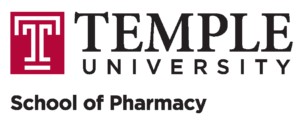
For An Additional $995, You Can Earn 1.5 Graduate Credit Hours Towards Temple’s RAQA Graduate Program! For More Information, Email INFO@KENX.ORG, Call 856-281-7134 or Register Above.

